The cold front had passed, leaving rain-soaked wood and dropping temperatures in its wake. And I was concerned. Could I start a fire and warm my chilled backside and a chilled wife with the single match held between my forefinger and thumb? I thought back to the classic Jack London story “To Build a Fire” and wondered if I had what it took to survive the damp coolness of an Arkansas winter with minimal equipment and my wits, let alone the negative 75-degree frozen hell of the Far North where (spoiler alert) London’s character met his icy demise.
Flicking the match’s head on stone, fizzle and spark finally flamed on the wooden stick as the smell of sulfur dissolved in a northwest breeze. I touched the tiny blaze to a nest of cedar bark and the tongue of light licked at the sap-sticky fibers then flickered, barely alive. A glowing orange and then charred black spread through the tinder as white smoke puffed up through the still cold kindling. The fire was gasping, and it needed my help to catch its breath.
I knelt to eye level with the smolder and blew, first gently and then with more force. The embers responded with a brightening as smoke billowed into the night air. A final hearty puff brought full ignition as the blaze flared up through stacked hickory and oak twigs.
I settled back into the camp chair, a smug grin smeared across my face. Five minutes later, as I placed a bigger log on the fire, I was still smiling and pride soon led to a quiet boasting to my wife about her husband’s incredible woodsman abilities … until she told me to shut up or she would go watch another episode of Grey’s Anatomy. Yes, this one-match fire happened in my backyard. But the skill has been put to use in various fire pits across the Ozark National Forest. Highly flammable tinder, open airways, and a good ember bed are the keys to a one-match fire.
How to do it
The best, absolute best, fire tinder found in my area is cedar bark (note: what we call cedars are really junipers, but that’s another article). Cedar bark is cloth-like and peels off of the tree in ribbons. The fibers are already loose, frayed, and often hold dried remnants of the sap that help it catch fire. Since it grows on an evergreen with its shielding foliage, cedar bark also tends to not get soaked in rain.
So the first step to building a one-match fire is to find a cedar tree, strip the bark, and form it into two palm-sized spheres. If you can’t find cedars, dry grass is the next best option or you can use a pocketknife to slice shavings from a seasoned (which means dead long enough that most of the fluid sap is gone) stick for tinder. I’ve also gone full caveman and pounded seasoned twigs between two rocks until the wood fibers separate. Frayed, stringy fibers are important because, though, they loosely stick together, they’re malleable as a mass. Also, individual fibers dry and light much easier in even a small flame or embers. Don’t pack your handfuls of tinder too tight. You want air to circulate freely between the fibers.
Next, set your tinder aside and find pencil-sized and smaller twigs. This is your kindling. The drier the better on all counts, but I’m mostly talking sap content. Thin, water-soaked twigs will quickly dry in a small flame, but sap-filled wood will starve a fire. The best test for seasoned twigs is flexibility. Green twigs will be more bendable and you want twigs that easily snap. When you collect two handfuls, set them aside and find two handfuls of larger twigs up to the size of your wrist. Again, drier is always better. The best way to tell if larger pieces of wood are seasoned is relative weight, appearance, and how they sound when you knock them against each other. These are learned skills requiring practice. If it’s been raining, look under evergreen trees or any semi-protected area for kindling.

When you’ve collected your fire-making ingredients, make a hand-sized triangle on the ground in the fire pit with three sticks about the thickness of your thumb and place several dry leaves in the middle as a barrier between the cold, damp soil and your fire. On top of the leaves, place one ball of tinder. The leaves and bottom tinder make up what I call the ember bed, and it’s crucial. If the other handful of tinder, which you’re going to place on top of this one, doesn’t blaze up you’ll need a fuel-rich place for the embers to fall so you can breathe life into them. Press the bottom tinder down into a disc shape so it doesn’t protrude above your foundation. Lay three or four pencil-sized twigs across the tinder supported by the bottom thumb-sized sticks. Now lay two more thumb-sized sticks across those and then place your other handful of tinder — shaped into a shallow upside-down cup — in the square space between the thumb-sized sticks.
Build a “log cabin” by laying your smallest kindling in an alternating criss-cross pattern on top of the three-tier foundation and tinder and one another in order of ascending size. After a couple of layers (probably eight to twelve inches tall) you can, and I often do, turn the log cabin into a hybrid teepee with my largest sticks leaning against the walls. Be sure to leave space between the sticks so that air can get into the center of your teepee … or log cabin … or whatever you want to call it.
Now take one match from the box and look at it. Consider your human frailty and the very narrow band of temperatures within which you can survive. Consider that this one match, under certain circumstances, could be the difference between life and death.
After a moment or two of deep existential thought, strike the match and cup your hand around the precious little flame, lest a scoundrel breeze extinguish it, and gently touch the lit match to the tinder within your tee-pee/log cabin walls. Try to light the center of your top tinder right in the cupped depression
It should flame a bit and smoke a lot, but the fire may go out. That’s OK as long as you have embers, in which case you’ll need to get up close and personal with a few gentle puffs, increasing in intensity as the embers respond. There should be lively, hot plumes of smoke as you blow on the embers. All that smoke is a good sign. It means the wood and the tinder is drying, becoming ever more flammable by the second. Be patient and thoughtful with your new creation as you coax it into maturity.
As the fire grows, feed it carefully until a solid bed of coals glow like lava. Then throw a couple of big logs on, lean back in your camp chair, and smile with smugness. But don’t crow about your prowess too much — or you may find yourself sitting by the fire all alone.




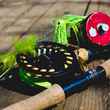





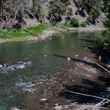





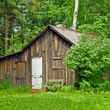




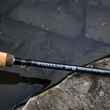



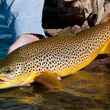
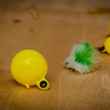


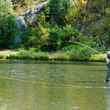
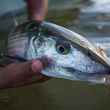
Comments
Loren Irving replied on Permalink
I think this is a fine article. Well written and on a subject that is important and could be very important in certain situations. I learned how to build a fire about 70 years ago and it's a skill that has come in handy a good number of times. When I started elk hunting I always carried a fire kit, with a cheap bic lighter as well as a Ferro Rod and tinder. As with hunting then and mostly fishing now I still consider being able to get a fire going an essential skill should the circumstances dictate staying the night out there somewhere. My buddies have always given me a bit of static but I have started many warming fires and they seem to enjoy them. Again well done.
Mike Brennan replied on Permalink
Sorry, but there’s a much easier way, though not “Natty Bumpo” - 1. Find wood, preferably small. 2. Add Fliagra. 3. Strike match. 4. Put match to wood. 5. Jump back. Saved our bacon on the Mo in October.
Pages